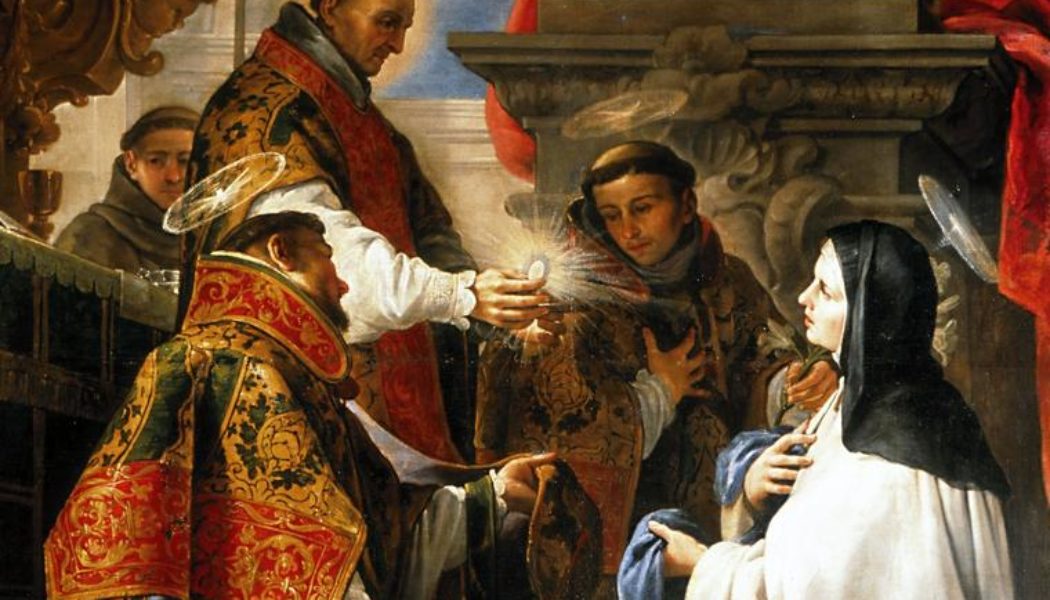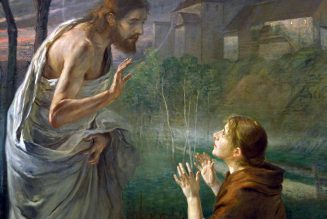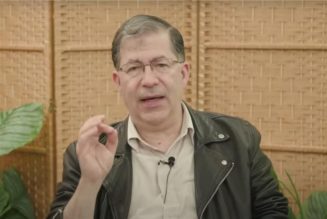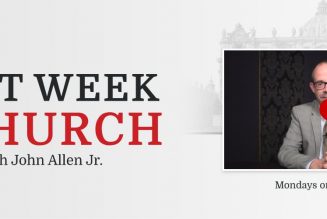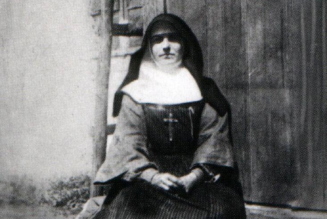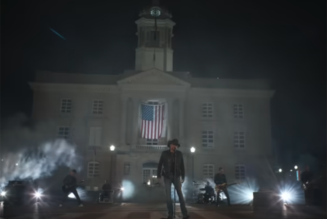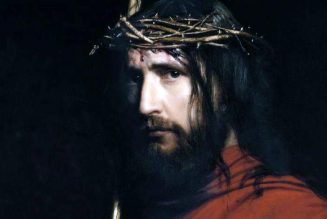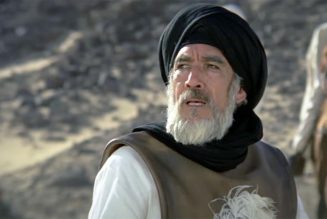
The liturgy, most especially the Mass, is the central act of the Church. Vatican II reminds us that “the liturgy, ‘through which the work of our redemption is accomplished, most of all in the divine sacrifice of the Eucharist, is the outstanding means whereby the faithful may express in their lives and manifest to others the mystery of Christ and the real nature of the Church” (Sacrosanctum Concilium 2). Everything the Church does should lead us to the worship of God, most preeminently in the Mass.
When most Catholics think of the Mass, they think of their experience each Sunday. On our way to Easter, however, Catholics experience several liturgies — especially during Holy Week — that contain elements unique to those days. Sometimes, those liturgies seem to be “Mass with add-ons,” like on Palm Sunday or Holy Thursday. Sometimes, those liturgies somehow seem to be like Mass but also have lots of different rites, e.g., the Easter Vigil.
The purpose of this series will be to explain ahead of time what’s “different” and “unique” about these liturgies so that, when you participate in them, you may do so — as Vatican II asks — with “conscious and active participation” (SC, 14) because you better understand their structure and theology. There is a maxim in liturgical theology, lex orandi, lex credendi. It means “the law of prayer is the law of belief” or, put more bluntly, how we pray and act in the liturgy is an expression of what we believe in our faith. So, it’s a good idea for us to understand how we pray and act in the liturgy!
In this first essay, we’ll provide an overview of the Mass and of Lent. The following six will deal with the stunningly beautiful liturgies of Palm Sunday, Holy Thursday evening, Good Friday, the Easter Vigil and Easter Day.
The Mass
Catholics participate in Mass every Sunday. How many, however, have a clear grasp of how the “parts” of the Sunday Mass fit together? They’re not, after all, a string of prayers haphazardly following one upon another. There is a coherence to the structure of the Mass. There are four main “parts”: the introductory rites; the Liturgy of the Word; the Liturgy of the Eucharist; and the Concluding Rite. Let’s take a look at each.
Introductory Rites. The liturgy has a beginning. It starts with greetings. But the greeting is not to each other but to and from God. That is why the celebrant begins — as all things should — in the name of the Triune God with the Sign of the Cross. The priest then has a choice of several greetings, from the most “basic” “The Lord be with you” to more expanded greetings drawn from Scripture (mostly St. Paul).
Now, having begun our liturgy, we need to grapple with the one thing that is anti-liturgical: sin. Sin has no place before the infinitely holy God and is the barrier impeding our relationship with him. That is why we are invited to “call to mind our sins,” which we then acknowledge, asking for God’s mercy.
Having asked for God’s mercy and trusting in his goodness, our impulse rightly should be to praise him: “Glory to God in the highest!”
Finally, the priest prays the “Collect” or “Opening Prayer.” That prayer sets the particular tone and themes of this liturgy, gathering all our individual needs as well as our joint prayer, “collected” and presented to God.
The Liturgy of the Word. The two main axes of the Mass are the Liturgies of the Word and of the Eucharist. Although Word and Sacrament go together (a bone of contention in the Protestant Reformation, which is apparent in Protestant services where Bible reading and preaching predominate and “the Lord’s Supper” is an occasional annex), there is a reason the Liturgies of the Word and Eucharist follow one on the other. In the ancient Church, those preparing for baptism (“catechumens”) participated in the Liturgy of the Word, by which they were taught what the Christian life expected of them. But they did not attend the Liturgy of the Eucharist because this was for those who were fully initiated (i.e., baptized) and in good standing (i.e., free from mortal sin), who could partake of the Eucharist.
The Sunday Liturgy of the Word contains three readings. The first, usually from the Old Testament, is followed by an Old Testament “response” from the Psalms. The second is one of the New Testament apostolic readings (usually Paul, often Peter in Lent or Eastertide). The Gospel, which has pride-of-place, is preceded by an acclamation, usually “Alleluia (except in Lent).” The Sunday Gospel itself generally rotates over three years among Matthew, Mark and Luke. The year 2024 is the year of Mark.
The priest attempts in the homily to apply the Gospel to our circumstances today. Our response to what we have heard in the readings is to proclaim our faith through the Creed. We conclude the Liturgy of the Word with the “Prayers of the Faithful” in which we pray for various needs.
The Liturgy of the Eucharist. The Liturgy of the Eucharist itself has three parts: the Offertory, the Eucharistic Prayer and the Communion Rite.
In the Offertory, the priest offers the bread and wine that will become the Body and Blood of Christ, inviting us to pray that “my sacrifice and yours may be acceptable to God, the Almighty Father.” Following our response, he offers the Prayer Over the Gifts.
The Eucharistic Prayer begins with the Prefatory Dialogue (“The Lord be with you”). It’s called the Preface because it opens the Eucharistic Prayer. The Preface itself is usually changeable and correlated to the feast (except if Eucharistic Prayer IV is used). We respond with the “Holy, Holy, Holy,” which leads into the Eucharistic Prayer, during which “the power of the words and the action of Christ, and the power of the Holy Spirit, make sacramentally present under the species of bread and wine Christ’s body and blood, his sacrifice offered on the cross once for all” (CCC 1353).
The “Communion Rite” is just that — what directly prepares the faithful to receive Communion. It begins with the Our Father, invites us to be reconciled to our brother before approaching the altar in the “sign of peace,” asking once more for God’s mercy in the “Lamb of God” and proclaiming it in response to the priest’s invitation, acknowledging “Lord, I am not worthy …” The priest then distributes Communion. Afterward, there should be a period of silent thanksgiving followed by a communal thanksgiving expressed in the Postcommunion prayer.
The Concluding Rite. The conclusion of the Mass is rather terse: the priest once more engages in prayerful dialogue (“The Lord be with you”), blesses us and dismisses us because “the Mass is ended.”
That’s the basic structure of the Mass. It’s the basic structure of every Mass and of the Good Friday Liturgy, if we look closely. That’s what we’ll be doing in this series. Some of those structures will be expanded; other elements will be unique. We’ll try to explain why, all with the purpose of enriching your participation in the Lenten liturgies.
Lent
Lent is the liturgical season preceding Easter. It’s a penitential and preparatory season, whose sense comes precisely from Easter. Easter is about man’s reconciliation with God from the rebellion of sin and the dominion of death. Our share in Christ’s work is our accepting his grace of conversion and our assumption of penance as a way of contributing our “widow’s mite” to repairing what sin has disjointed.
Lent runs 40 days, a symbolic number that recalls
- the 40 days Jesus spent in the desert, tempted by the devil;
- the 40 years Israel wandered in Sinai, from its escape from Egyptian slavery, preparing to be worthy of the freedom of God’s People in the land he gave them; and
- the 40 days of the Flood, which befell man as punishment because of his wickedness.
The Sunday Gospels of Lent follow a certain pattern. The First Sunday always features Jesus’ temptations in the desert. The Second is always about his Transfiguration, already prefiguring his Resurrection. The Third, Fourth, and Fifth Sundays vary. In the second and third years of the cycle of readings, there are specific Gospels. But a priest can always use the Gospels for the first year (year A). Why? Because Lent was the time for preparing catechumens for baptism, and those three Gospels (called “scrutiny readings” because they were used to catechize catechumens) were focused in a special way on the Christian mystery: Jesus as the Living Water (the Samaritan Woman at the well, Third Sunday), Jesus as Light of the World (cure of the man born blind, Fourth Sunday), and Jesus as the Resurrection and Life (the raising of Lazarus, Fifth Sunday).
The Fourth Sunday of Lent is also called “Laetare (Rejoice) Sunday.” The name comes from the first words of the entrance antiphon, and it marks the midpoint of Lent. It is one of two Sundays in the year the priest uses rose vestments, hinting at the joy that already peeks into this penitential period.
The last Sunday of Lent is Palm Sunday, but we’ll treat that separately.
